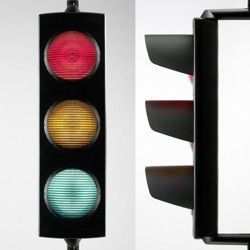May 7, 2019
Republican lawmakers, who have been trying for years to unplug red-light cameras, just scored a win on Tuesday with the tentative passage of a House bill that would ban cities from operating the devices.
But even if the bill becomes law, red-light cameras may not get chucked immediately. State Rep. Armando Martinez, D-Weslaco, added a provision to House Bill 1631 that would allow local governments to continue operating cameras until their current contracts with vendors expire.
The bill’s movement late Tuesday came despite objections from many city officials and local police officers who say cameras reduce deadly accidents and bring in revenues for trauma care centers and local governments.
But many Texans often bemoan the cameras’ $75 fines, and lawmakers like Bedford Republican state Rep. Jonathan Stickland, the bill’s author, call the cameras unconstitutional because they violate the presumption of innocence and the right to confront your accuser.
Fellow legislators cheered and jeered — and some even shouted “liberty”and “freedom” — as the notorious rabblerouser introduced his first bill to clear the lower chamber.
“I’ve been waiting a long time for this moment—7 years,” he said. “The people of Texas have been waiting a longer time than I have.”
HB 1631 tentatively passed in a 108 to 35 vote. A companion version of the legislation has already been winding through the Senate.
Red-light camera opponents often cite studies that say the cameras don’t improve public safety or may actually increase rear-end crashes. They also cite a 2004 Texas Transportation Institute study, which found that the vast majority of red-light camera tickets are issued for violations that occur within the first seconds after the light changes colors. However, the majority of deadly right-angle or “T-Bone” crashes — the kind that camera proponents aim to minimize — occur five or more seconds after the signal turns.
“Tickets are often being issued for split-second violations where collisions are not actually occurring,” state Sen. Bob Hall, R-Edgewood, said when he introduced the upper chamber’s version of the measure to a Senate committee.
Meanwhile, advocates for the cameras often cite an array of other studies, including a 2011 TTI study, as evidence that red-light cameras help keep drivers safe. At Texas intersections where a camera was installed, the study found that red-light-related crashes dropped by 25% — and right-angle crashes were reduced by more than 30%. A 2005 study sponsored by the Federal Highway Administration found similar results.
Tanya Brooks, assistant director for Fort Worth’s transportation Management Division said during a Senate Transportation committee meeting that crash rates at intersections with cameras in her city have plummeted by 59%. She also said 83% of the red-light runners never receive a second violation – which she cites as proof that the cameras spur drivers to stop breaking the law.
“Eliminating the program is detrimental to improving safety at the intersections in the City of Fort Worth as well as our community,” she said.
Towfiq Khan, executive manager of Dallas’ transportation department, also said his city has seen major improvements since the cameras were installed — and the vast majority are located within school zones.
“Our red-light cameras protect our most vulnerable residents — our children,” he said in the bill’s hearing.
In the 2017 fiscal year, $18.3 million from red-light camera fines went to the state’s trauma care, and, according to the bill’s fiscal note, banning cameras would cut $28 million in funding for trauma centers over the next two years. It was not clear late Tuesday how this budget issue would be resolved.
“Red-light cameras could be removed from Texas intersections after House vote” was first published at by The Texas Tribune, a nonprofit, nonpartisan media organization that informs Texans — and engages with them — about public policy, politics, government and statewide issues.






